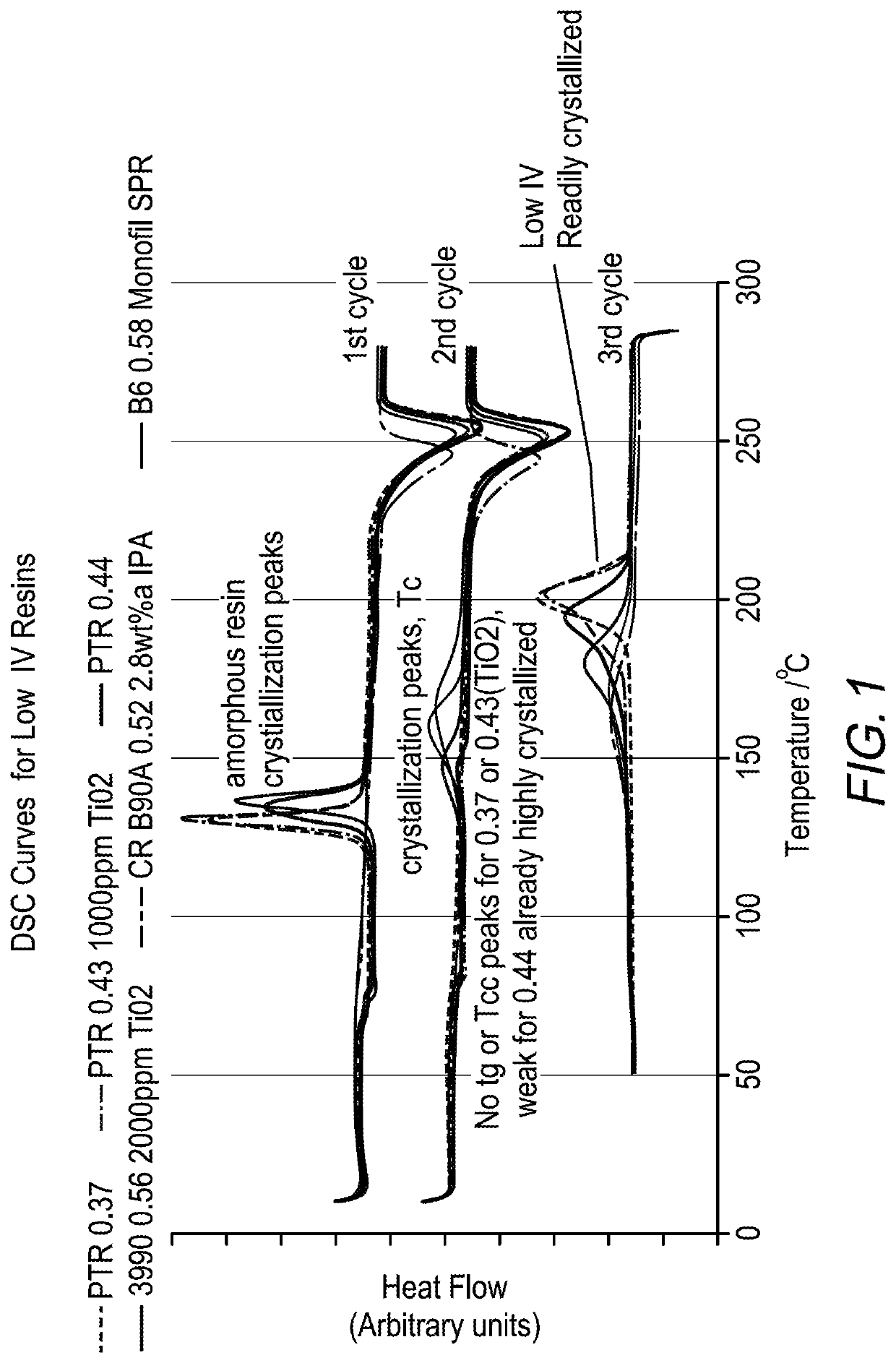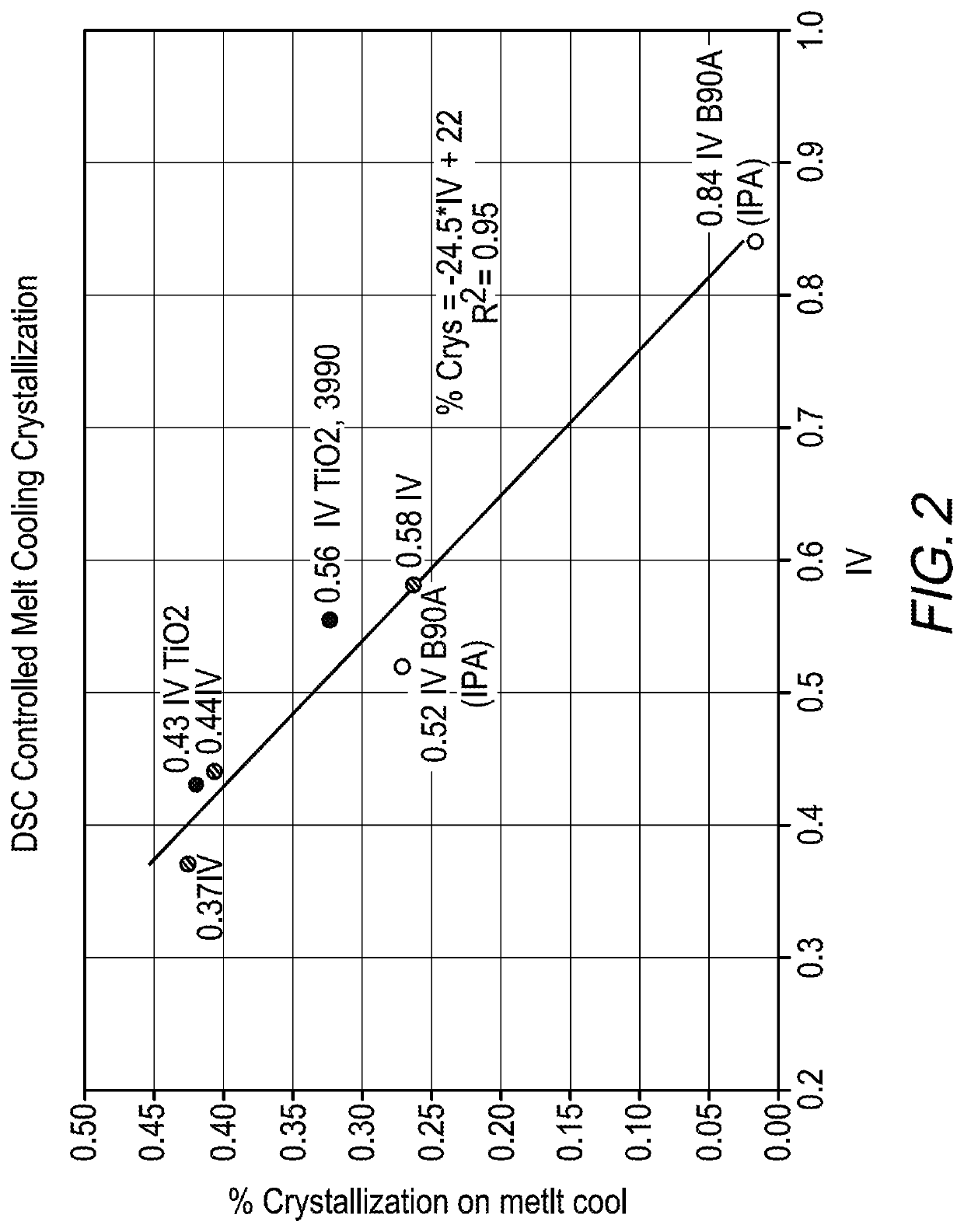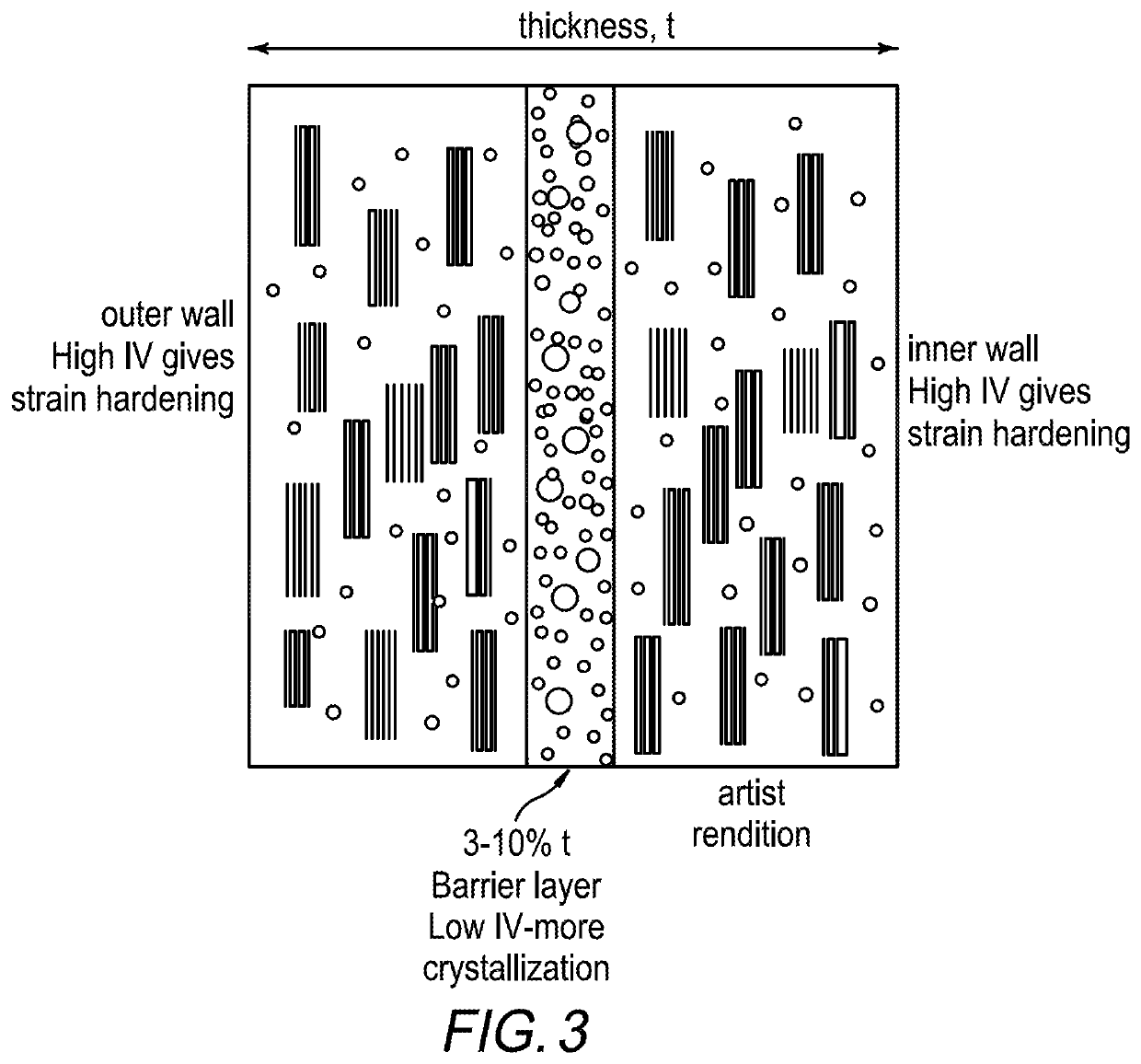Some resins such as PTT, PEN and PTN are used mainly for specialized packaging applications because these resins are significantly more expensive to manufacture than, for example, poly(
ethylene terephthalate) resins.
Containers for carbonated beverages may be especially susceptible to the egress of gases such as
carbon dioxide which are normally present in carbonated soft drinks.
If the resin used to form a beverage container permits
carbon dioxide to escape, the product delivered to the
consumer may be of unacceptable quality (e.g., “flat”) if stored too long.
Oxygen in contact with a food substance may lead to
color changes and oxidation that accelerates the staleness of the food product.
PET and the other aforementioned polyesters do not meet all of the
gas barrier requirements for small size single serve drink containers (e.g., containers for serving sizes of less than 24 oz.).
This market segment is currently served by cans due to the shorter
shelf life of the single serve plastic containers.
Conventional technologies for improving gas barrier performance typically require the use of manufacturing equipment that is substantially more complicated, requires a greater initial capital outlay and greater operating expenses.
Not only are the economic demands unfavorable, the use of such technologies can negatively affect the appearance and / or aesthetic properties, e.g.
delamination of the
layers of a container and / or the recyclability of PET containers.
This can substantially increase the cost of the PET resin and / or the complexity of the process used to manufacture the resin and bottles made from the resin, as well as create problems with other physical properties of the resin.
The multi-layer bottles allow for a specialized resin, often with higher cost and / or with reduced compatibility with the PET structural
layers, to be isolated in a specific location within the container.
The preform reheating process is inefficient.
The IR selective wave-length lamps radiate energy to penetrate the PET preform, but also require air circulation to cool the preform surfaces during the reheating process due to the low heat
conductivity of the PET.
Not cooling the preform surface can result in overheating and the onset of
crystallization of the surfaces rendering the container opaque or hazy.
However, unmodified PET containers have relatively high gas permeability and may allow
diffusion of gas molecules in both directions across the container wall.
In either case, absorption and
diffusion of gas molecules through the walls of the PET plastic container may limit the product's
shelf life.
However, it does not stop the flux of gas molecules in or out of the container wall.
However, such a solution is generally not preferred as it increases the container cost as more material and energy are consumed to make such a container.
In addition, a thicker container has an adverse environmental
footprint due to its increased weight, production energy, and
transportation fuel consumption.
While not a preferred option, this approach imposes an upper limit constraint on the additional cost incurred to improve gas barrier performance.
The specialized nature of both active and passive gas barrier systems makes them significantly more expensive than the base PET resin.
Nylon based special gas barrier resins have deficiencies, even when used in relatively small amounts.
They can delaminate during or after
blow molding due to insufficient adhesion between
layers, cause undesirable yellow color and / or
haze, and act as a contaminate in the existing post-
consumer PET recycling streams.
A relatively small amount of these additives, which may help prolong shelf-life for consumers by some weeks, can render the entire, predominantly-PET container unattractive for recycling.
 Login to View More
Login to View More 


